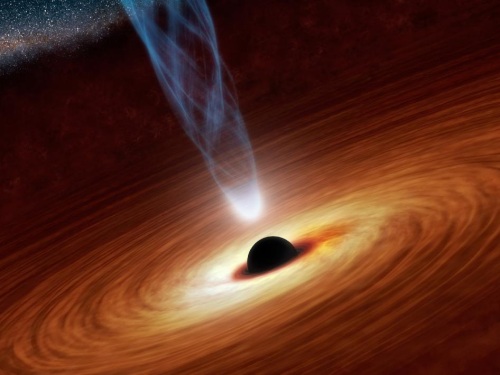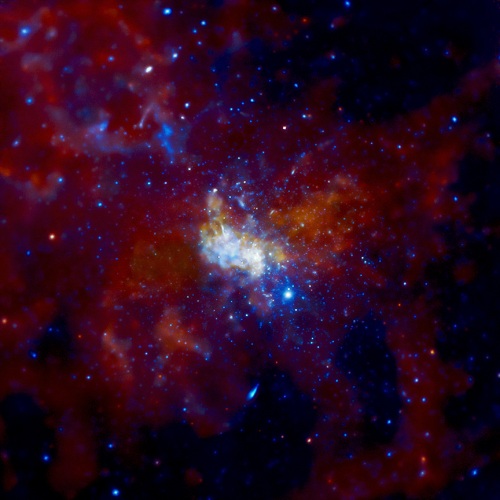
Artistic image of a supermassive black hole. (Image: NASA/JPL-Caltech)
Out in a dust and gas filled galaxy called NGC 1365, there is a supermassive black hole that has a mass two million times that of our sun. This black hole is a dense object buried at the heart of its galaxy and it is spinning almost as fast as Einstein’s theory of gravity will allow.
This information was gathered by two X-ray space observatories, NASA’s Nuclear Spectroscopic Telescope Array (NuSTAR) and the European Space Agency’s XMM-Newton. This is the first time that the spin rate of this black hole has been measured definitively and clears up some long-standing debates about similar measurements in other black holes and will lead to a better understanding of the evolution of black holes. Measuring its spin is important to understanding its history and the history of its host galaxy, NGC 1365.
Their research is also helpful in testing Einstein’s theory of general relativity (gravity can bend space-time, the fabric that shapes our universe, and the light that travels through it).
“We can trace matter as it swirls into a black hole using X-rays emitted from regions very close to the black hole,” said Fiona Harrison, NuSTAR principal investigator of the California Institute of Technology in Pasadena. “The radiation we see is warped and distorted by the motions of particles and the black hole's incredibly strong gravity.”
Supermassive black holes are surrounded by pancake-like disks, formed as their gravity pulls matter inward. Einstein's theory predicts that the faster a black hole spins, the closer the disk lies to the black hole. The closer the disk is to the black hole, the more gravity from the black hole will warp X-ray light streaming off the disk.
By exploring the disks, the team found that the black hole’s gravity is causing the warping effects on the light streaming off the disk. By gathering this information, scientists are now ready to measure the black hole’s spin rate.
Check out some past black hole images from NASA.

The supermassive black hole at the center of the Milky Way known as Sagittarius A. It is about 26,000 light years from Earth.
(Image: NASA/CXC/SAO)

This black hole lies at the center of galaxy M80. It is about 70 million times more massive than our sun.
(Image: Credit: X-ray: NASA/CXC/Wisconsin/D.Pooley & CfA/A.Zezas)

A ring of black holes. The nine X-ray sources scattered around the ring are so bright that they must be black holes,
with masses that are likely ten to twenty times that of the sun. (Image: X-ray: NASA/CXC/MIT/S)
Advertisement





